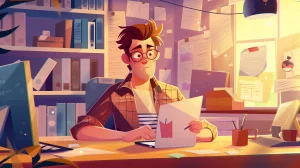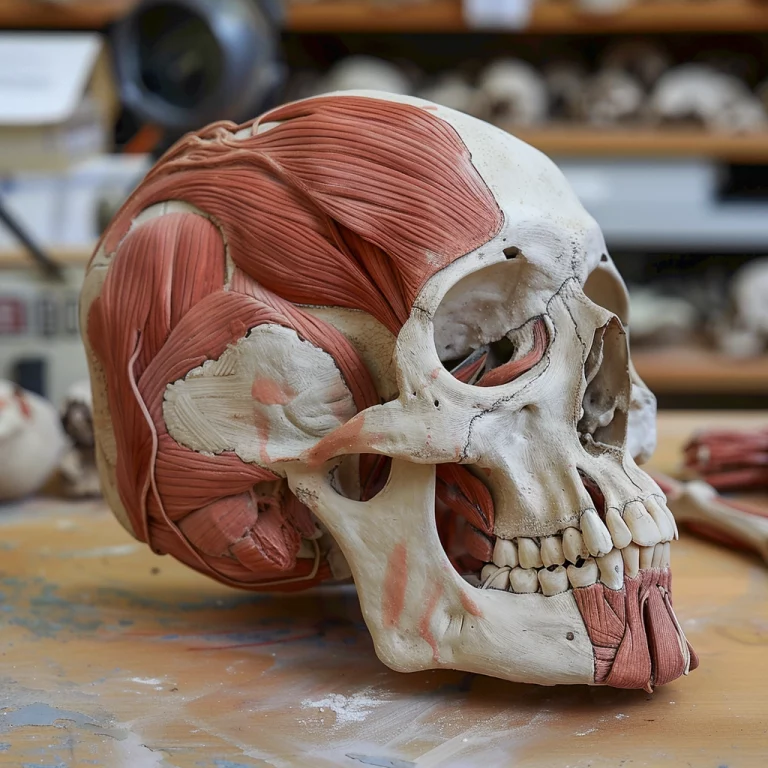
AI generated graphic. Original documentation was lost.
Back when the internet was still not as robust and omnipresent as it is nowadays, I recently had graduated from Art School in Lima, Peru, and was looking for jobs, trying to be financially independent. Things weren’t that simple; I struggled a lot the first few years, and while no silver lining was on the horizon, all of a sudden things changed completely. Someone once told me that it was because it was the Year of the Dragon in the Chinese calendar, and I am a Dragon. So, I like to credit my luck to it.
It all started with entering the local art market and selling my work at one of the most successful Art Galleries in Lima at that time, earning a few hundred dollars monthly. A couple of months later, with the help of my very good friend and talented designer Carlos Pariente, I landed my first illustrator gig for a very important educational publishing company in the region. To my surprise, things didn’t stop there. Weeks later, I was reached out to work as a Printmaking Teaching Assistant at my former Art school as they were looking for someone who could teach students to merge digital tools with traditional printmaking methods.
I felt lucky and happy at the same time; I was finally able to make (sort of) a living.
After a year enjoying this new status of “employed,” something unexpected happened: An ex-classmate and artist Carlos Pedreros called me for another teaching gig, just that this time it was to teach art at the most important Medical and Dental School in the country. I thought I heard him wrong, “Are you telling me that we will be giving art lessons to future doctors and dentists?” “Yes,” he replied.
I come from a family of Doctors and Dentists, so this opportunity sounded completely out of context. Who was bold enough (or crazy enough) to have come up with the idea of including Art as part of a medical and dental undergraduate curriculum and get it approved by the Faculty Board?
Carlos and I spent hours over the phone, met in person, and tried to make sense out of all this. We both needed the job, but at the same time, the approved syllabus was more about teaching handicrafts than proper art (there was a puppet activity included!). One of the big asks we had was “Can we modify the course’s contents? Even while they were approved?” Carlos went off to ask the Program Lead about how much flexibility we could have and came back with an answer: We still needed to deliver a sculpted head starting out of the skull, add face muscles, and finish it by covering it with skin; which for us was the only thing that made sense out of the rest of the activities. That looked promising and gave us room to reprogram the rest of the classes. One good thing was that Carlos had made a really good impression on the Faculty Board Director, so she trusted him. With a green light, knowing our boundaries and upcoming deadline (classes started in a couple of weeks), we began to craft a very different perspective of an art class. We first organized our roles: Carlos focused on the Medical students while I focused on the future Dentists; and decided to come back with our approaches next time we meet.
When I was in high school, I remember my dad (an Orthodontist) had this sort of bad lead generation habit of going to a party or reunion and staring at people’s smiles and mouths in detail, approaching and handing them his business cards with the phrase “I think you need Orthodontic treatment. I am an Orthodontist, please call me”. It was an awkward experience, and I remembered as a teenager asking him to please stop doing that. A few years later when my sister also followed my dad’s steps, I realized the habit was the result of clinical training most dental students undertake to identify a person’s type of malocclusion. This training was based heavily on observation prior to running any x-rays or MRIs; and it is observation, the basis, and the very foundation of Art studies. I had found how to plan my class approach to this group. How can art help a future dentist in their career path? I shared this finding with Carlos, and we both agreed on moving forward with it and fleshed out the rest of the classes.
I remember that first day of classes. I had never given a class to freshly high school graduates. I asked them to take a piece of paper and a pen or pencil as they were going to have a test. They all panicked. I continued and asked them to please sit in pairs. Some were complaining that no one had told them about any test on the first day and most thought my class was going to be a traditional high school art class. “Please stand up and stare at your partner for 5 mins. Pay attention in detail about your classmate you have in front of you.” They had no idea what was going on. I checked my watch and followed, “Now, have a seat and turn around giving your back to your partner and on the piece of paper try to draw what you have remembered from them. You have now 10 mins”. They laughed, scribbled on their sheets, and after those 10 mins, I asked them to please hand them to me. I then picked each of them and asked who was the person portrayed and had them make comparisons from the drawing to the model. This was my starting point to start talking about proportions and scale. How it was important to start developing their observation skills with a strong focus on the head, face, and neck. As their future lives will be dedicated to those body areas. We broke down the face and talked about muscles involved in the face and how the skull, shape of the mouth, and volume of the teeth defined face traits. Each class was about observation, memory, and anatomy and ended with a plaster skull that they slowly added muscles, and skin. Our hypothesis was that the physicality of doing so would help them to immerse themselves in the practice and become more aware of how other things are connected: alignment of the nose, type of mouth, shape of the jaw, etc. Which later will be considered when they need to do projections of a treatment outcome.

Fast forward to today, I realize how amazing and unique this opportunity was, and ironically how it happened in the third world instead of the US –the land of opportunities. The sentiment/outcomes it generated in those students and the satisfaction that it brought to us, to be able to contribute to the formation of such important jobs by using Art was very rewarding. I remember students at the end of the course approaching us and acknowledging our efforts into changing that perspective they had about Art and how they felt they were getting useful things out of it. I don’t know what happened after our involvement in the program, as we just contributed for 2 years and I wonder where these students are now. Do they still remember the class? How it affected their future and general formation. We could have been more methodic and developed a measuring plan about the real impact it had beyond what we captured from their voluntary and immediate feedback, but at that time, all that wasn’t even considered.
Now as I think about this and how lucky I was, I wonder: Will I have an opportunity like this again here in the US? Will it ever happen? I really hope so 😉